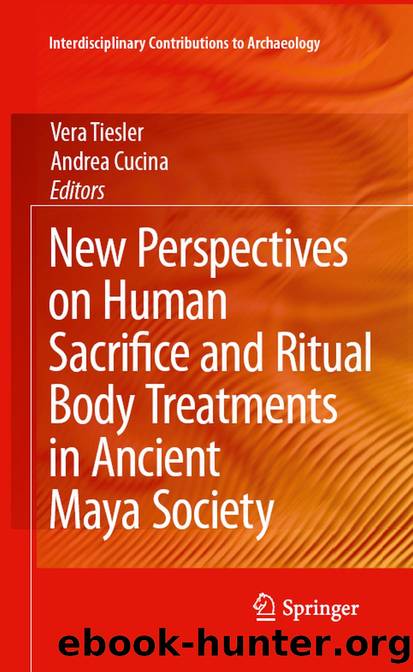New Perspectives on Human Sacrifice and Ritual Body Treatments in Ancient Maya Society by Vera Tiesler & Andrea Cucina

Author:Vera Tiesler & Andrea Cucina
Language: eng
Format: epub
Publisher: Springer New York, New York, NY
6.3.1 Endnotes
1.Boone and Smith (2003) draw upon Robertson's (1959, 1970) notion of an “International” art style and Nicholson's (1960, 1982) definition of the widespread “Mixteca-Puebla” style in their own conception of a “Postclassic International” art style that appears on objects from sites across the central and southern regions of Mexico as well as from areas of northern Yucatán and Guatemala. Boone and Smith (2003:188) conceive of the Mixteca-Puebla style of Postclassic period murals, extant manuscripts, and elite polychrome pottery as a subcategory of a broader pan-Mesoamerican “International” art style. By the Late Postclassic period (AD 1200–1520), the “International” style became an increasingly popular means of communicating among elites precisely because it transcended ethnic, linguistic, and political boundaries. Some of its defining elements include: space that is divided into registers, which is most often filled with anthropomorphic or zoomorphic figures without additional background, forms that are rendered as flat and with geometric precision, strong black outlines, vivid coloration, figure proportions that are squat with important parts enlarged, figures positioned with important parts exposed to their fullest, and figures that float in space or are tied to a line along the bottom of the register (Boone and Smith, 2003:187–188).
Download
This site does not store any files on its server. We only index and link to content provided by other sites. Please contact the content providers to delete copyright contents if any and email us, we'll remove relevant links or contents immediately.
| Native American | Popol Vuh |
| Rastafari Movement |
The Four Agreements by Don Miguel Ruiz(5511)
Breaking Free by Rachel Jeffs(3621)
The Hatha Yoga Pradipika (Translated) by Svatmarama(2482)
120 Days of Sodom by Marquis de Sade(2438)
Member of the Family by Dianne Lake(2019)
The Tao of Physics by Fritjof Capra(1848)
The Psychedelic Gospels: The Secret History of Hallucinogens in Christianity by Jerry B. Brown(1826)
The Road to Jonestown by Jeff Guinn(1743)
Uriel's Machine by Christopher Knight(1621)
Going Clear by Lawrence Wright(1571)
Going Clear: Scientology, Hollywood, and the Prison of Belief by Lawrence Wright(1570)
The Grand Grimoire: The Red Dragon by Author Unknown(1414)
The Gnostic Gospel of St. Thomas by Tau Malachi(1412)
Key to the Sacred Pattern: The Untold Story of Rennes-le-Chateau by Henry Lincoln(1351)
The Malloreon: Book 02 - King of the Murgos by David Eddings(1307)
Waco by David Thibodeau & Leon Whiteson & Aviva Layton(1293)
The New World Order Book by Nick Redfern(1255)
The Secret of the Temple by John Michael Greer(1216)
The Initiatory Path in Fairy Tales by Bernard Roger(1177)
